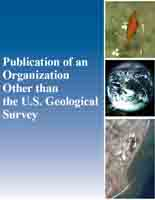Observing systems, modeling, and forecasting
Links
- More information: Publisher Index Page (via DOI)
- Download citation as: RIS | Dublin Core
Abstract
Predicting harmful algal blooms (HABs) requires integrating physical, chemical, and biological data collected from observing networks and then assimilating these data into models, which are used to generate forecasts. In 2005, the Harmful Algal Research and Response: A National Environmental Science Strategy 2005-2015 (HARRNESS, 2005) made recommendations on how to improve HAB modeling and forecasting over the next decade. Key HARRNESS recommendations related to sensing, networking, and modeling HABs included:
● Support the development and validation of new and improved technologies for remote cell and toxin detection, and for modeling and forecasting,
● Improve coordination of monitoring/ and modeling efforts, both at national and regional levels,
● Improve the use of networking technologies for monitoring and modeling efforts,
● Conduct sustained time series measurements of the biotic, chemical, and physical environments impacted by HABs,
● Develop food web models on the ecosystem fate and effects of toxins,
● Develop and improve species-specific models that link to physical-biological models.
Here we review HAB observing, modeling, and forecasting advances and technologies and recommend research and management priorities for the next decade and beyond. Our report encompasses sensing technologies, sensor networking and data management, models and forecasts, and the paths to operationalize forecasts.
Continued improvements of deployable sensors are foundational to improving early warning indicators, models, and forecasts, which are only as good as the underlying data. Sensing technology has advanced considerably in the last decade; for example, more capable fluorometric pigment sensors can track changes in bloom biomass in real-time. Additionally, automated imaging/classifying systems to identify and quantify key harmful algal (HA) taxa are being routinely deployed. However, deployable toxin sensors are available for only some HAB toxins and continue to be identified as a critical need by researchers and managers. As more and improved sensors and technologies become available, the data quality associated with each sensor needs to be assessed. Data quality encompasses the reliability, accuracy, and uncertainty associated with sensor-generated data. These data need to be of known quality so that researchers, managers, and end-users can reliably determine if the information is appropriate for their intended applications. Many of the data quality recommendations from HARRNESS (2005) are still relevant and have been reiterated within the management community. Understanding and documenting data quality, and when applicable, standardizing best practices for sensor use, continue to be recommended.
| Publication type | Report |
|---|---|
| Publication Subtype | Organization Series |
| Title | Observing systems, modeling, and forecasting |
| Chapter | 1 |
| DOI | 10.1575/1912/69773 |
| Publication Date | July 17, 2024 |
| Year Published | 2024 |
| Language | English |
| Publisher | Woods Hole Oceanographic Institution |
| Contributing office(s) | California Water Science Center |
| Description | 25 p. |
| Larger Work Type | Report |
| Larger Work Subtype | Organization Series |
| Larger Work Title | Harmful algal research & response: A national environmental science strategy (HARRNESS), 2024-2034 |
| First page | 31 |
| Last page | 55 |


